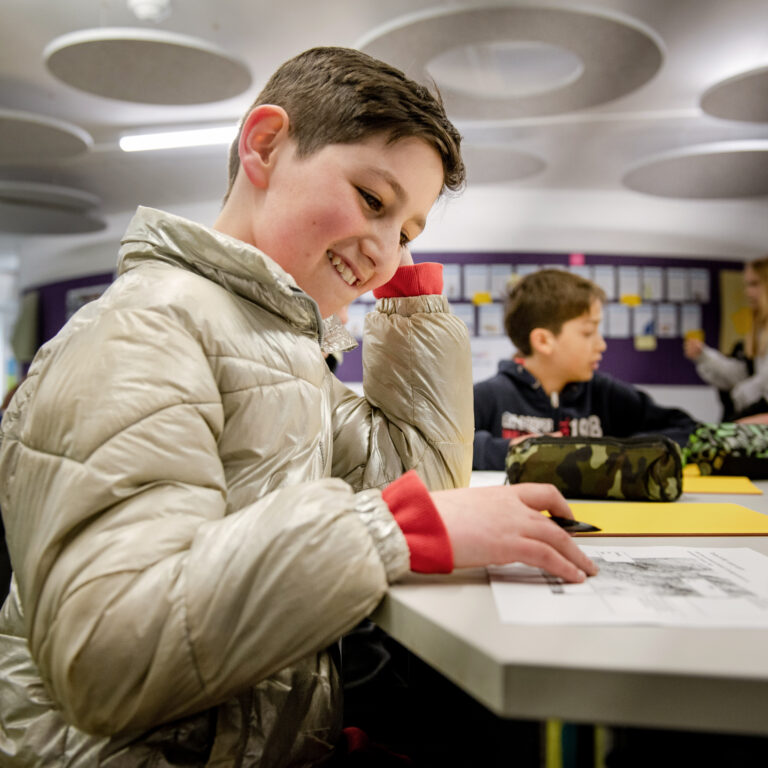Keeping your children safe online
7th December 22

Screen time, and the associated battles and worries, isn’t a problem which is going to go away, so how can parents protect their children from the potentially harmful aspect of being online and manage their relationship with their screens?
Our Digital Literacy Coordinator, Kevin Tibble, recently led a series of workshops for parents sharing tips and tricks for creating safer digital environments at home. We know not everyone was able to attend, and the information is so useful, we decided to create this brief guide to share.
Technology is not the cause of these problems – it is our relationship with technology and the situations we create as parents which causes difficulties so it’s always worthwhile taking a step back and looking for the root causes of tensions rather than blaming the screen itself.
This guide is aimed at children in primary school but much of the advice is universal.
Where and how can they access the internet?
One of the most effective ways to filter what children see and how much time they spend online is adult supervision. Children should learn to ask an adult before they go online and ideally, they should stay in the room with an adult while using the device.
Screens in the bedroom are not conducive to a good night’s sleep, especially if being used in the hour before bed.
It’s a good idea to check ratings and reviews of anything children want to watch or play online before they access it – Common Sense Media have a useful reviews section and where possible watch or play with them.
Online behaviour
Setting expectations and limits as a family is a great first step. You can find a useful template for a Family Media Agreement (and a lot of other useful information) on the Common Sense Media website. Talking through the areas in the agreement with your young person is a great way to start the conversation about screen time and it acknowledges that media is a big part of young people’s lives and we can’t just dismiss it.
The truth is that at some point your child will see something inappropriate or which they find upsetting. One of the main things you can do is to keep the lines of communication open and talk to children about how to use the internet safely. Knowing they can speak to you if they are worried about something they have seen or done online is crucial to keeping them safe.
What settings should I be using on my devices?
Most devices or operating systems have parental controls which you can use to restrict their access to apps or the internet or to put time limits on the use of the device.
Depending on which devices your child is using you may need to take different steps on different devices.
Mobile Devices
On Apple devices it is advisable to set up Family Sharing which allows you to create an Apple ID for children under 13 and gives adults the option to manage phone/iPad usage remotely from their own device. You can find out more about it and how to set it up by clicking here. Note that you will need to set up an email address for the child which you won’t be able to change – so choose something with longevity if you don’t want to have to set up from scratch again when they decide they don’t want their email address to be their pet name or similar!
Once you are set up you can use the Family Sharing to set a time for the device to be active or turned off, app limits and content and privacy restrictions.
On Android devices the Family Link app delivers similar functionality. You can download it from the App or Play store. You will need a Google account for the managing adult to be the ‘family manager’ and can then create sub-accounts for the children. You can find information on getting started with Family Link by clicking here.
Laptops and Computers
With both Apple and Microsoft operating systems you will need at least two user accounts – the main (adult) account and one or more child accounts.
On a Macbook go to System Preferences > Parental Controls to set up an account and set relevant restrictions. When done you click the padlock to lock the settings. More information about set up can be found here.
On a laptop or computer which uses the Microsoft operating system you need to use Window’s Family Safety. You and your child will need a Microsoft account (Outlook/Hotmail). Once the child’s account has been created settings will automatically be set to an appropriate level based on their age. More details and you can get started here.
Games Consoles and Social Media Apps
All of the major brands offer parental controls on their gaming consoles – for step by step guides to these (and for mobile devices and computers too) Internet Matters is a great resource – you can find their guides here.
OpenDNS
While basic filtering is provided by setting up the devices as advised above – it’s advisable to use a further content filter and we recommend OpenDNS Family Shield. It is a free service which blocks adult websites, phishing and malware. You can install it on your child’s device and even on your router at home. The setup guide for all devices is available on their website.
Connectivity, creativity, information and learning are all huge benefits of the online world – helping our children to navigate it safely is vital so they can enjoy it and make good choices as they take increasingly independent steps into that world. We hope you find the information in this guide helpful.






